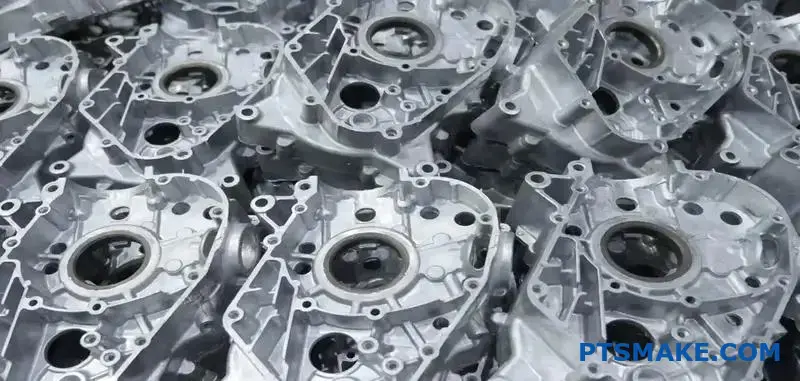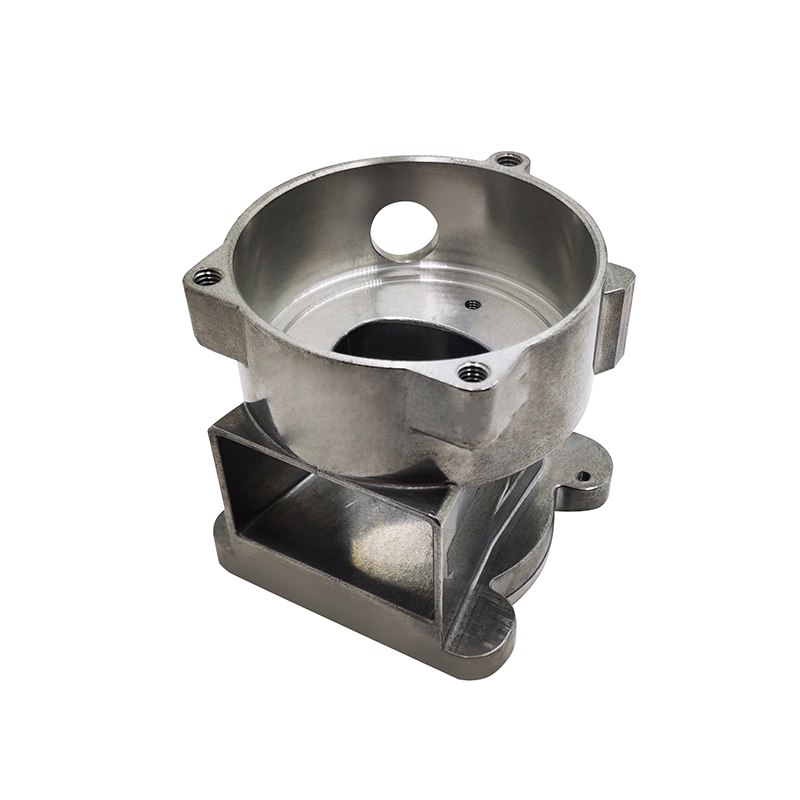Everything You Should Know About Precision aluminum casting Materials and Alloys
Aluminum Casting Explained: Key Truths and Insights for Sector Professionals
Aluminum casting works as a vital procedure in modern-day manufacturing, shaping elements throughout numerous industries. Its varied methods, such as sand and die casting, accommodate various manufacturing requirements. The special buildings of aluminum alloys enhance their applicability, yet challenges stay in preserving high quality and performance. Understanding these elements is necessary for sector professionals. What are the most up to date innovations and finest methods that can better enhance this procedure?
Summary of Aluminum Casting Processes

Crucial element of aluminum casting procedures include the preparation of mold and mildews, which may be made from sand, steel, or ceramic products, depending on the planned usage. Additionally, temperature level control is essential to ensure proper melting and solidification of aluminum.
The casting procedure permits intricate designs and can achieve high degrees of dimensional accuracy. When cooled, the spreadings may undertake completing procedures such as machining or surface area therapy to meet certain performance criteria. In general, aluminum casting functions as a flexible production technique, properly satisfying the varied requirements of various industries.
Kinds Of Aluminum Casting Techniques
In the domain name of aluminum casting, various techniques are employed to attain different outcomes. Sand casting techniques supply flexibility and cost-effectiveness for complicated forms, while die casting processes offer high precision and performance for mass production. Comprehending these approaches is vital for picking the suitable technique based upon project needs.
Sand Casting Methods
Sand casting strategies represent a fundamental technique in aluminum casting, where sand is made use of as a mold material to shape liquified metal. This process includes developing a pattern from the wanted part, which is then put in a sand blend to create a mold and mildew. The sand is compacted around the pattern, and after removal, it creates a tooth cavity in the form of the component. Molten aluminum is put right into this cavity, allowing it to strengthen and cool down. One substantial benefit of sand casting is its versatility; it can accommodate huge elements and complex shapes. Furthermore, the materials made use of are reasonably inexpensive, making it an accessible option for different production applications in the aluminum sector.
Die Casting Processes
Die casting procedures are a popular method for forming aluminum parts, making use of high-pressure methods to force liquified steel into exactly crafted mold and mildews. This procedure is particularly preferred for its ability to produce complex forms with limited tolerances and a smooth surface. There are two key kinds of die casting: hot chamber and cold chamber. Warm chamber die casting is ideal for steels with low melting points, enabling faster manufacturing rates. Conversely, cold chamber die casting is excellent for greater melting factor metals, calling for a different melting heating system. Both methods boost effectiveness and decrease material waste, making them vital in auto, aerospace, and durable goods markets. Understanding these procedures assists professionals pick the most appropriate strategy for their particular applications.
Material Feature of Aluminum Alloys

Stamina and Resilience
Toughness and longevity are crucial qualities of aluminum alloys that make them ideal for various casting applications. These materials exhibit a desirable strength-to-weight proportion, allowing for the development of light-weight yet durable components. With regard to tensile strength, particular aluminum alloys can be crafted to stand up to substantial loads without deforming. This residential property is especially crucial in markets such as aerospace and vehicle, where efficiency and safety and security are extremely important. In addition, aluminum alloys usually preserve their mechanical residential or commercial properties under diverse temperature level conditions, making certain constant efficiency. The inherent ductility of these alloys also enables efficient shaping during the casting procedure, making it much easier to generate complicated geometries. In general, the strength and resilience of aluminum alloys add substantially to their extensive usage in advanced applications.
Corrosion Resistance Characteristics
While aluminum alloys are treasured for their stamina and lightweight homes, their rust resistance is another vital feature that improves their suitability for numerous applications. Aluminum normally forms a safety oxide layer when subjected to moisture, which aids to stop further oxidation. This inherent property makes aluminum alloys specifically important in environments susceptible to corrosion, such as industrial and marine setups. Furthermore, various alloy structures can affect resistance levels, with particular alloys particularly crafted to improve this particular. Therapies like anodizing can better enhance corrosion resistance by thickening the oxide layer. Comprehending the deterioration resistance of aluminum alloys is necessary for market professionals when selecting products for jobs requiring sturdiness and longevity in tough environments.
Advantages of Aluminum Casting in Production
Aluminum casting deals numerous advantages in manufacturing, making it a recommended choice for various sectors. One significant benefit is its lightweight nature, which adds to lowered transportation costs and enhanced energy effectiveness in final result. Moreover, aluminum's excellent thermal and electrical conductivity improves performance in applications needing warmth dissipation or electric transmission.
The material's ability to be cast right into intricate forms permits for layout adaptability, lowering the requirement for additional machining processes. On top of that, aluminum casting exhibits superior deterioration resistance, bring about longer item life-spans and reduced maintenance costs.

Common Applications of Aluminum Castings
The adaptability of aluminum casting enables its extensive usage throughout various industries. Typical applications consist of auto parts, where light-weight and corrosion-resistant elements, such as engine blocks and transmission housings, boost vehicle efficiency. In the aerospace sector, aluminum spreadings are utilized for architectural parts, offering strength without adding considerable weight.
Furthermore, the electrical market take advantage of aluminum spreadings in manufacturing enclosures and warmth sinks, where thermal conductivity is vital. The durable goods field also integrates aluminum castings in items like cooking equipment, furnishings, and decorative items, combining looks with capability.
The building industry uses aluminum spreadings for building aspects, window frameworks, and fixtures, which provide durability and design adaptability. On the whole, the varied applications of aluminum spreadings underscore their significance in modern production, adding to improvements in effectiveness and product design throughout several fields.
Innovations and Technical Advancements
As markets remain to progress, advancements in aluminum casting innovation are transforming manufacturing processes and item capacities. Developments in 3D printing and additive manufacturing have actually allowed the creation of intricate geometries that were previously difficult to accomplish with conventional approaches. These innovations allow for quick prototyping, decreasing preparations and expenses.
Furthermore, improvements in mold and mildew style and products have boosted the casting process by raising effectiveness and reducing waste. The combination of smart manufacturing methods, such as IoT devices and real-time data analytics, permits much better surveillance and optimization of production criteria, resulting in greater top quality outputs.
In addition, developments in aluminum alloys supply boosted stamina, deterioration resistance, and lightweight residential or commercial properties, accommodating the expanding demands in aerospace and auto industries. Jointly, these innovations are not only enhancing efficiency however also meeting the rigorous criteria of contemporary engineering applications.
Finest Practices for Quality Control in Aluminum Casting
Making certain high-grade outputs in aluminum casting needs adherence to finest methods that incorporate numerous phases of the manufacturing procedure. Initially, extensive material assessment is crucial to validate the top quality of aluminum alloys made use of, as contaminations can greatly affect the last product. Carrying out precise melting and pouring strategies decreases flaws; preserving optimal temperatures prevents oxidation and promotes harmony.
In addition, mold and mildew style plays a vital duty; making aluminum casting use of computer-aided style (CAD) can enhance accuracy and lower human error. Normal tracking of the cooling procedure is critical to prevent warping and contraction. Additionally, making use of non-destructive testing methods, such as ultrasonic or X-ray examinations, assists identify internal problems without damaging the components.
Developing a responses loop with engineers and drivers fosters constant renovation, guaranteeing that quality control actions develop together with technical developments. By adhering to these ideal practices, makers can enhance the reliability and efficiency of aluminum spreadings.
Regularly Asked Questions
What Are the Environmental Effects of Aluminum Casting?
The ecological influences of aluminum casting include significant energy intake, greenhouse gas exhausts, and potential water pollution from factory procedures. In addition, bauxite mining for aluminum ore can lead to environment destruction and soil deterioration.
How Does Aluminum Casting Compare to Other Metal Casting Procedures?
Aluminum casting typically offers advantages in lightweight elements and deterioration resistance contrasted to various other procedures, such as iron or steel casting, which might provide greater strength but result in heavier and less corrosion-resistant products. - Aluminum Foundry
What Are Usual Issues in Aluminum Castings and Their Reasons?
Usual issues in aluminum spreadings consist of porosity, shrinking, and additions. Causes typically come from incorrect pouring techniques, inadequate mold and mildew style, or contamination of the molten metal, impacting the last item's stability and performance.
What Security Precautions Should Be Taken During Aluminum Casting?
Throughout aluminum casting, crucial safety and security preventative measures include using protective gear, making certain correct air flow, maintaining a tidy work area, taking care of liquified steel with care, and following established methods to lessen dangers of burns, inhalation dangers, and accidents.
Just How Can I Enhance the Efficiency of My Aluminum Casting Operations?
To improve performance in aluminum casting operations, one should maximize mold layout, enhance material handling, utilize automated processes, perform regular upkeep on equipment, and purchase employee training to improve skills and performance.
Various approaches exist, aluminum casting includes numerous main procedures that cater to various applications and requirements. Trick aspects of aluminum casting procedures include the prep work of molds, which might be made from sand, steel, or ceramic materials, depending on the planned usage. Sand casting techniques represent a basic method in aluminum casting, where sand is used as a mold and mildew material to form molten metal. As sectors continue to progress, innovations in aluminum casting innovation are changing production processes and item capabilities. Guaranteeing top quality outcomes in aluminum casting calls for adherence to best methods that incorporate various stages of the production procedure.